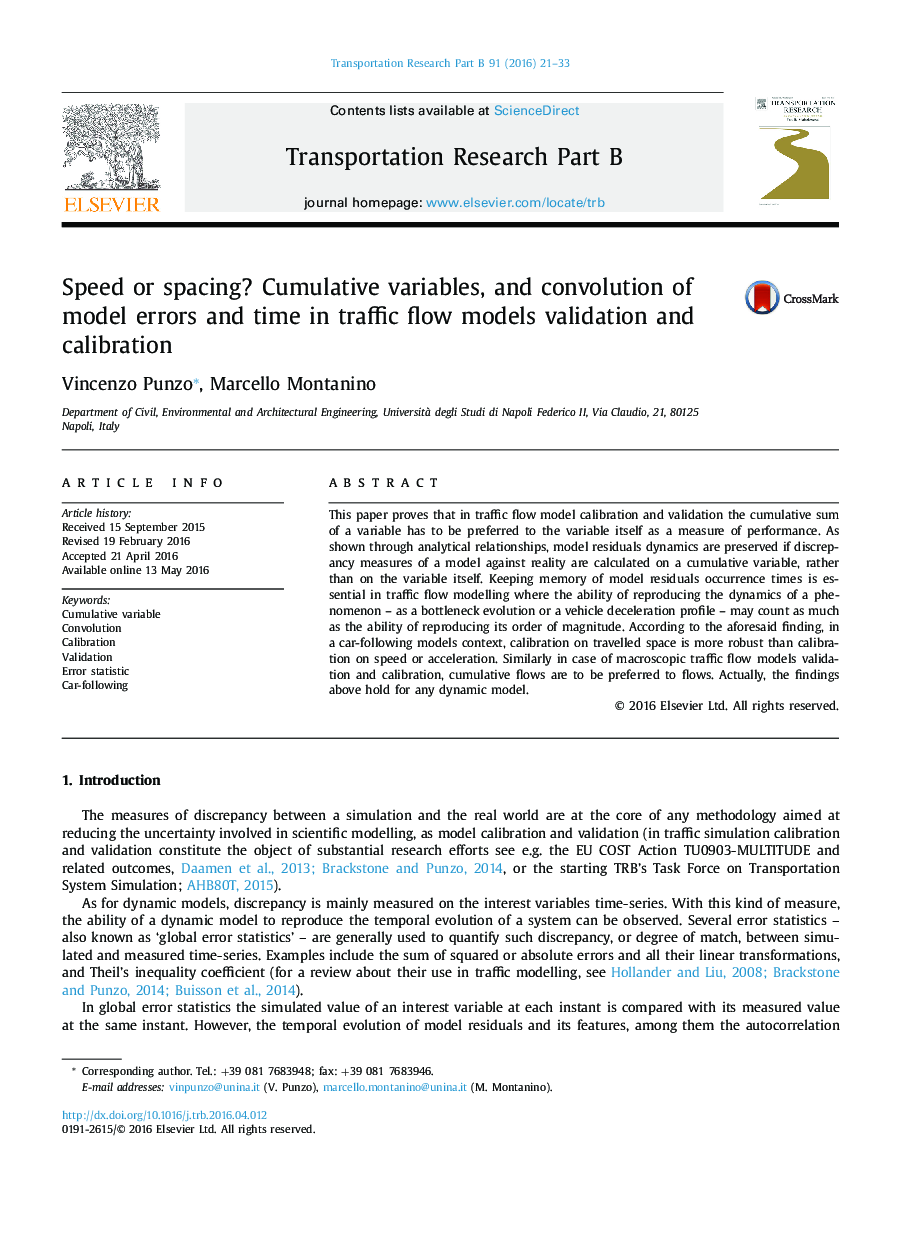| کد مقاله | کد نشریه | سال انتشار | مقاله انگلیسی | نسخه تمام متن |
|---|---|---|---|---|
| 1131525 | 1488953 | 2016 | 13 صفحه PDF | دانلود رایگان |
• We show that a cumulative traffic variable preserves the model residuals dynamics in common error statistics.
• We provide a general error propagation model of model residuals from a variable to its cumulative in SAE and SSE statistics.
• We show that residuals on a cumulative variable equal the convolution of residuals and time on the variable itself.
• We show that dynamic traffic flow models should be calibrated and validated on cumulative traffic variables.
• In car-following calibration and validation, inter-vehicle spacing is to be preferred to vehicle speed or acceleration.
This paper proves that in traffic flow model calibration and validation the cumulative sum of a variable has to be preferred to the variable itself as a measure of performance. As shown through analytical relationships, model residuals dynamics are preserved if discrepancy measures of a model against reality are calculated on a cumulative variable, rather than on the variable itself. Keeping memory of model residuals occurrence times is essential in traffic flow modelling where the ability of reproducing the dynamics of a phenomenon – as a bottleneck evolution or a vehicle deceleration profile – may count as much as the ability of reproducing its order of magnitude. According to the aforesaid finding, in a car-following models context, calibration on travelled space is more robust than calibration on speed or acceleration. Similarly in case of macroscopic traffic flow models validation and calibration, cumulative flows are to be preferred to flows. Actually, the findings above hold for any dynamic model.
Journal: Transportation Research Part B: Methodological - Volume 91, September 2016, Pages 21–33
